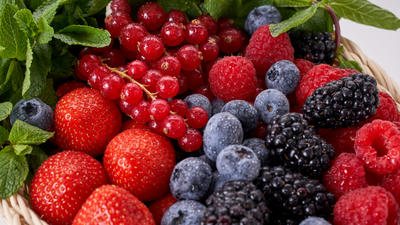What You Eat might Affect Your Breastfeeding Baby's Tastes
What You Eat can Affect Your Breastfeeding Baby's Tastes
By Katie Black
If you’ve ever worried that your favorite foods will make your breast milk taste bad for your little one, we’ve got some good news. While picky eaters definitely exist, research shows that what you eat might actually help shape your baby’s taste preferences. In other words, those unique or strong tasting foods may make your baby less picky and more of an adventurous eater later in life. To understand why this might be, you have to understand how taste works in the first place.
How taste works on a molecular level

There are taste buds on the top of your tongue and each is made of 50-100 taste cells that carry all five taste sensations (salty, sweet, bitter, sour, and umami). The flavor molecules they are receptive to are called tastants. In the cell membranes of these taste cells are receptor proteins. The way these receptors work is they either physically bind to a tastant (for sweet, bitter and umami) or are a channel to allow molecules to flow directly into a taste cell (for salty and sour). This whole process triggers signals to the brain through a network of taste nerves and voilà! You can taste different flavors!
The study

In 2021 researchers published an article in the journal of Molecular Nutrition and Food Research looking at whether tastants in a mom’s diet can be transferred through her breast milk and what effect they may have on a baby’s taste preferences.
The dish they used for the study was a curry that had ingredients of chili, pepper, and ginger (the flavor compounds being capsaicin, piperine, and 6-gingerol).
They chose this dish because curries are consumed frequently in many cultures globally and have different taste impressions. Typical curry dishes can have bitter tastants from cinnamon, sweetness from coconut milk, umami tastants from protein sources, salt, acidic ingredients, and other flavor activating compounds, such as pungent substances like capsaicin and piperine from chili and pepper.
After the participating moms ate some of the curry dish, they expressed some milk which the researchers analyzed for levels of capsaicin, piperine, and 6-gingerol.

Interestingly, capsaicin and 6-gingerol were not found in the breast milk. They hypothesized that there’s a barrier in the mammary gland that prevents the other flavor compounds from crossing.
However, they did detect piperine. The levels were too low for a human to be able to taste, but it’s highly possible that if a mom frequently consumes foods with piperine it’ll lead to her nursing baby having a higher tolerance for spiciness later in life.
Conclusion

So it turns out breast milk is not just a source of nutrition. It also has various tastants that could help prep your baby for the flavors they will find in solid foods, making the transition to eating easier.
If you were concerned about eating your favorite spicy foods while nursing, know that you may just one day have a kid that shares your love for your favorite dishes.
Another thing to think about is the possibility of sweetness being transferred to breast milk. Since formula often has added sugars like corn syrup, this might lead to a bigger sweet tooth and could contribute to type 2 diabetes (which is higher in formula vs breast fed infants). The same may be true for a breastfeeding mom if her diet is high in refined sugars. While we don’t know for sure one way or the other, it’s probably best to err on the side of caution and limit refined sugar if you’re concerned about your kid developing a sweet tooth.
For more information about diet and breastfeeding, check out this quick guide. You can also download the Emily’s Care app that has a 24/7 virtual lactation consultant that answers many of your breastfeeding related questions.
SOURCES
https://onlinelibrary.wiley.com/doi/10.1002/mnfr.202100508




